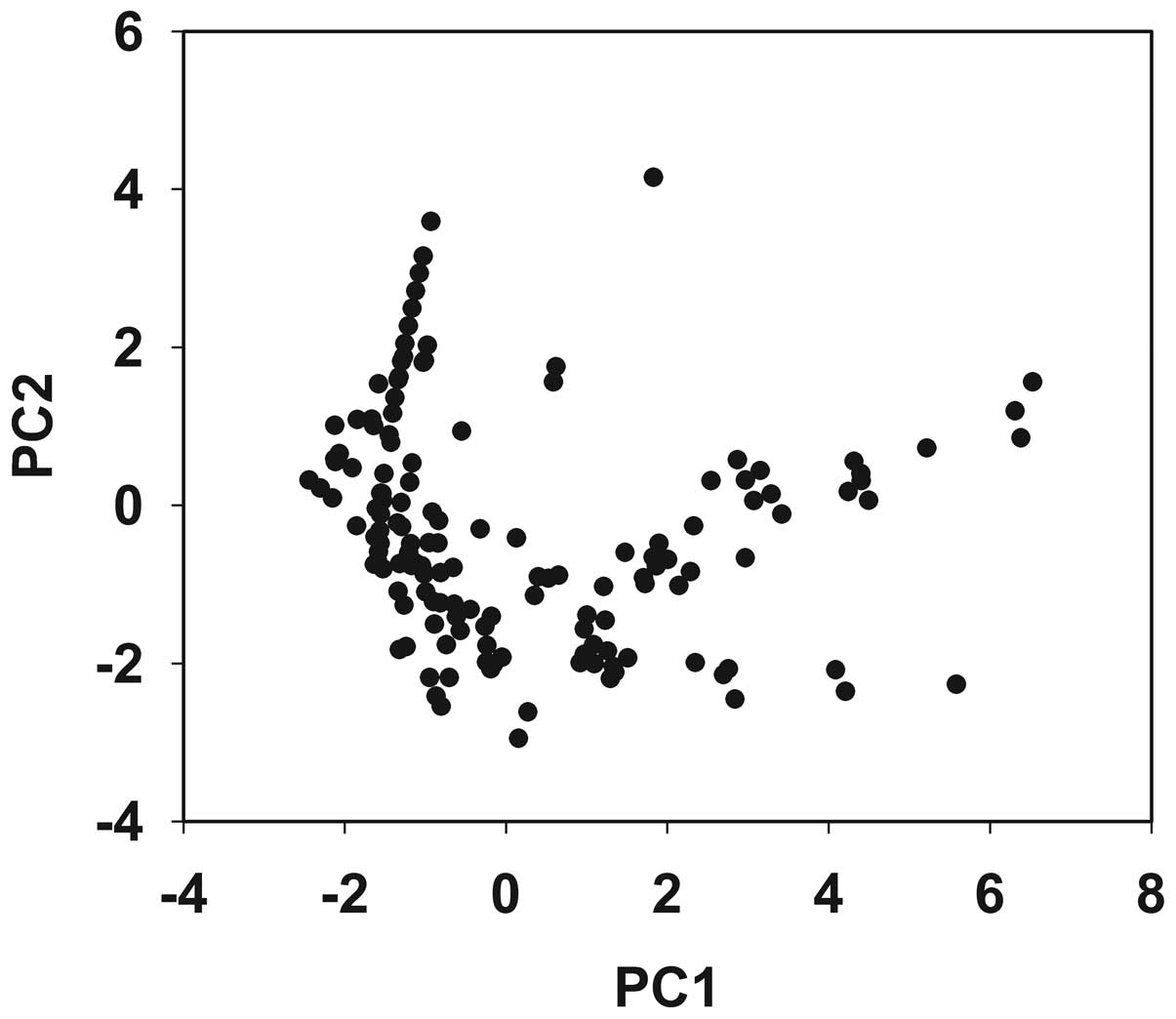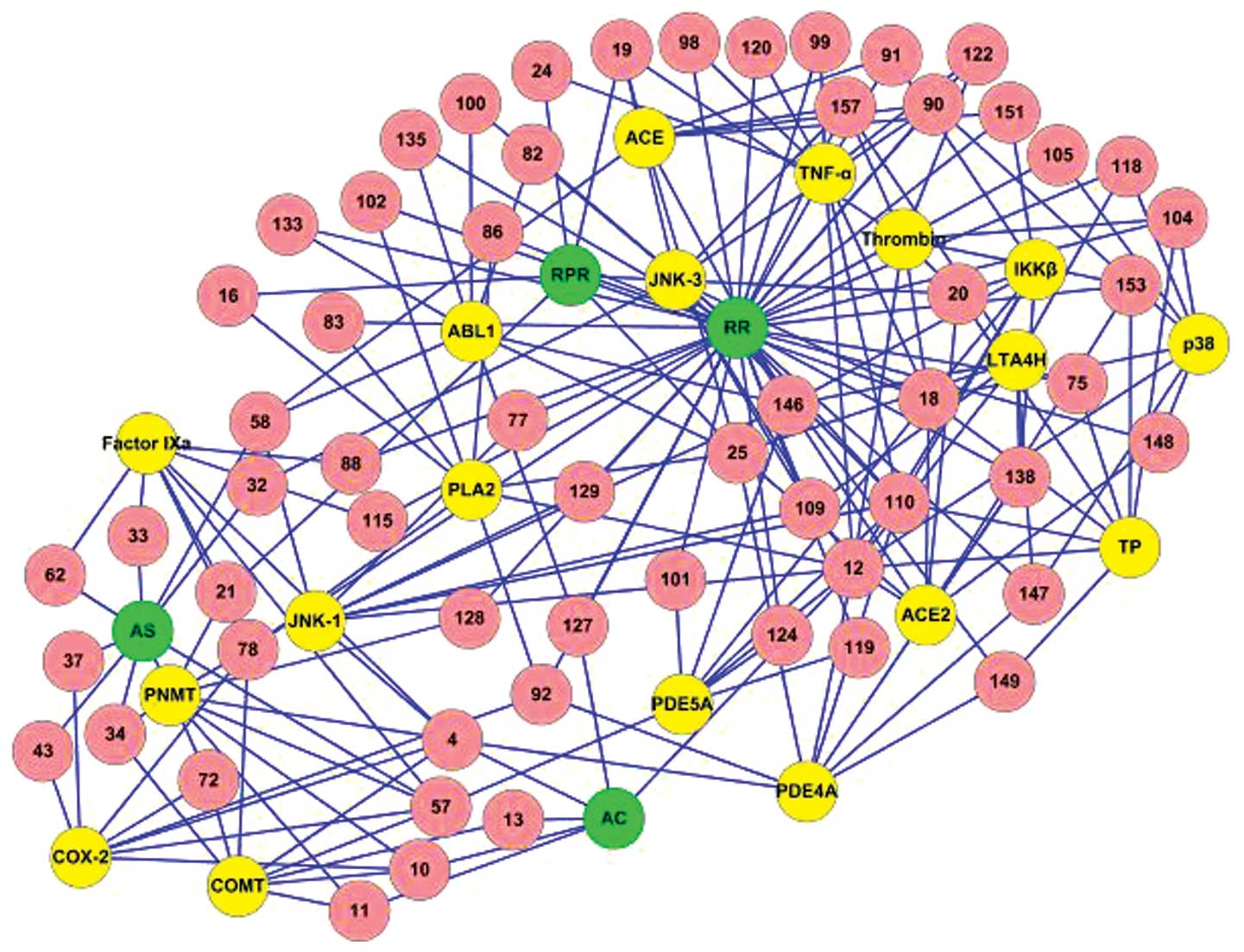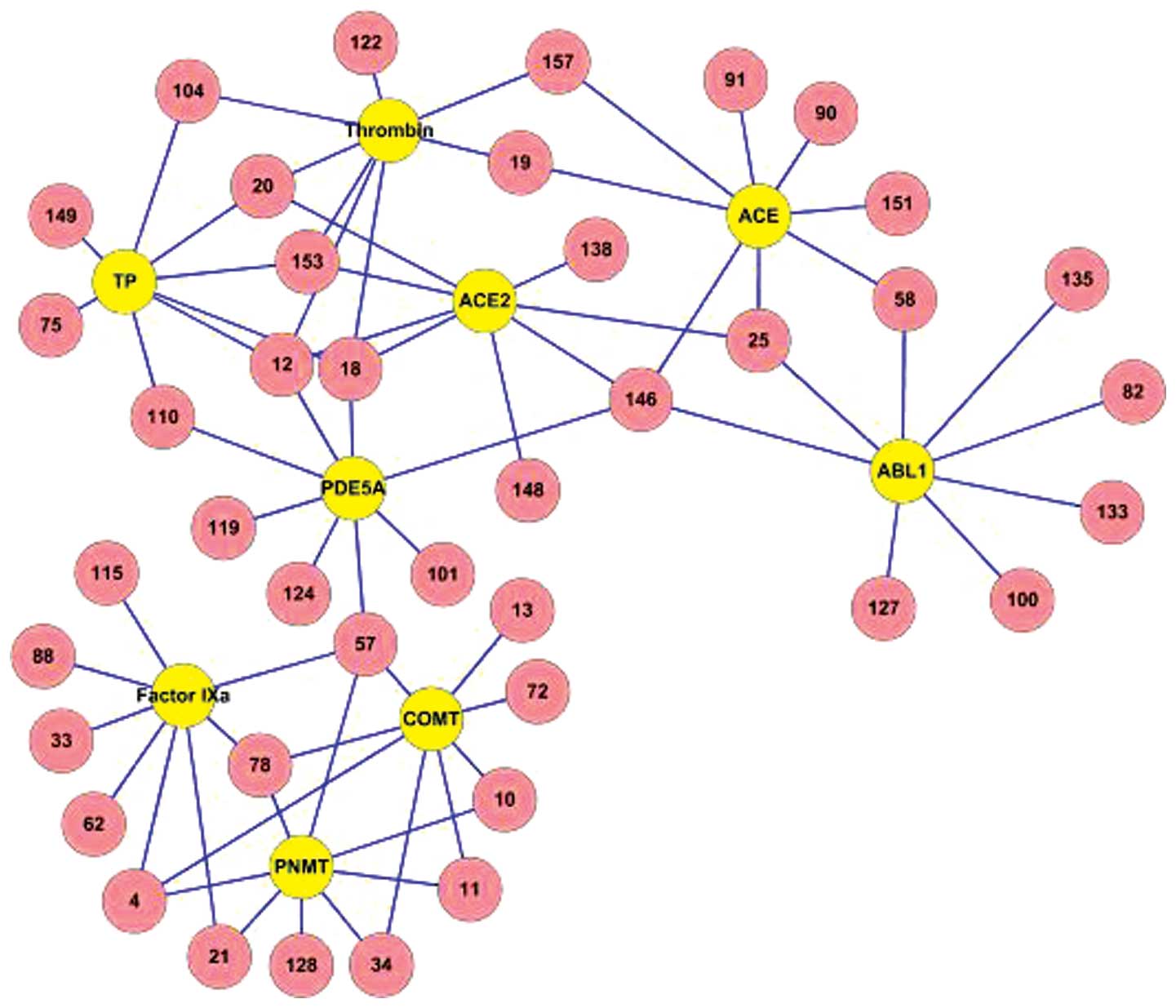|
1
|
Quan LG, Liu H and Wang JY: The effect of
external application of herbal medicines on 1147 patients with
swelling and pain after traumatic injury. Chinese Journal of Rural
Medicine. 8:39–40. 2010.In Chinese.
|
|
2
|
Luo YW and Sun ZG: The brief analysis of
treatment in line with the seasons, change of climate in Diesun
Miaofang. Journal of Hunan College of Traditional Chinese Medicine.
15:12–14. 1995.In Chinese.
|
|
3
|
Li JM and Li X: The application methods of
drug and commonly used formulae of traditional Chinese
traumatology. People’s Military Medical Press; Beijing: pp.
104–113. 1994, In Chinese.
|
|
4
|
Zheng CS, Xu XJ, Ye HZ and Liu XX:
Comparative Research on computer simulation of two different
therapeutic principles and formulae for osteoarthritis. Zhongguo
Zhong Xi Yi Jie He Za Zhi. 34:480–485. 2014.In Chinese. PubMed/NCBI
|
|
5
|
Liu H, Wang J, Zhou W, Wang Y and Yang L:
Systems approaches and polypharmacology for drug discovery from
herbal medicines: an example using licorice. J Ethnopharmacol.
146:773–793. 2013. View Article : Google Scholar : PubMed/NCBI
|
|
6
|
Zheng CS, Xu XJ, Ye HZ, Wu GW, Li XH,
Huang SP and Liu XX: Computational approaches for exploring the
potential synergy and polypharmacology of Duhuo Jisheng Decoction
in the therapy of osteoarthritis. Mol Med Rep. 7:1812–1818.
2013.PubMed/NCBI
|
|
7
|
Shi SH, Cai YP, Cai XJ, Zheng XY, Cao DS,
Ye FQ and Xiang Z: A network pharmacology approach to understanding
the mechanisms of action of traditional medicine: Bushenhuoxue
formula for treatment of chronic kidney disease. PLoS One.
9:e891232014. View Article : Google Scholar : PubMed/NCBI
|
|
8
|
Zheng CS, Ye HZ, Xu XJ and Liu XX:
Computational pharmacology study of tougu xiaotong granule in
preventing and treating knee osteoarthritis. Chin J Integr Med.
15:371–376. 2009.In Chinese. View Article : Google Scholar : PubMed/NCBI
|
|
9
|
Qiao X, Hou T, Zhang W, Guo S and Xu X: A
3D structure database of components from Chinese traditional
medicinal herbs. J Chem Inf Comput Sci. 42:481–489. 2002.
View Article : Google Scholar : PubMed/NCBI
|
|
10
|
Zhou JX, Xie GR and Yang XD: Handbook of
the chemical constituents in chinese herb original plants. Chemical
industry Press; Beijing: pp. 1165–1211. 2004, In Chinese.
|
|
11
|
Hassan M, Bielawski JP, Hempel JC and
Waldman M: Optimization and visualization of molecular diversity of
combinatorial libraries. Mol Divers. 2:64–74. 1996. View Article : Google Scholar : PubMed/NCBI
|
|
12
|
Zheng CS, Xu XJ, Liu XX and Ye HZ:
Computational pharmacology of Jingzhi Tougu Xiaotong granule in
preventing and treating Osteoarthritis. Acta Phys Chim Sin.
26:775–783. 2010.In Chinese.
|
|
13
|
Dobson CM: Chemical space and biology.
Nature. 432:824–828. 2004. View Article : Google Scholar : PubMed/NCBI
|
|
14
|
Zhou W and Wang Y: A network-based
analysis of the types of coronary artery disease from traditional
Chinese medicine perspective: potential for therapeutics and drug
discovery. J Ethnopharmacol. 151:66–77. 2014. View Article : Google Scholar
|
|
15
|
Liu HB, Xu J, Peng Y, Zhou JX and Xiao PG:
Targets of Danshen’s active components for activating circulation
activities. Acta Phys Chim Sin. 26:199–205. 2010.In Chinese.
|
|
16
|
Liu ZZ, Liang JP, Nie YC, Liu H, Xie CS,
Cheng GH and Su WW: Network pharmacology study of compound
xueshuantong capsule based on the targets related to blood
circulation and hemostasis. Acta Scientiarum Naturalium
Universitatis Sunyatseni. 52:97–100. 2013.In Chinese.
|
|
17
|
Zhang H, Zan JH, Long W and Liu PX: Study
on the anti-inflammatory mechanism of Chinese medicine herbs by the
molecular docking method. Heralad Med. 31:1542–1546. 2012.In
Chinese.
|
|
18
|
Ruan KH, Wijaya C, Cervantes V and Wu J:
Characterization of the prostaglandin H2 mimic: binding to the
purified human thromboxane A2 receptor in solution. Arch Biochem
Biophys. 477:396–403. 2008. View Article : Google Scholar : PubMed/NCBI
|
|
19
|
Wu J, Feng M and Ruan KH: Assembling NMR
structures for the intracellular loops of the human thromboxane A2
receptor: implication of the G protein-coupling pocket. Arch
Biochem Biophys. 470:73–82. 2008. View Article : Google Scholar :
|
|
20
|
Montes M, Braud E, Miteva MA, Goddard ML,
Mondésert O, Kolb S, Brun MP, Ducommun B, Garbay C and Villoutreix
BO: Receptor-based virtual ligand screening for the identification
of novel CDC25 phosphatase inhibitors. J Chem Inf Model.
48:157–165. 2008. View Article : Google Scholar
|
|
21
|
Zheng CS, Ye HZ, Cai LL, Chen JS, Wei LS
and Liu XX: Discussion on multi-component and multi-target pattern
of Liuwei Dihuang pill in the treatment of osteoarthritis on the
basis of computer simulation. J Trad Chin Orthop Traumatol.
25:11–13. 2013.In Chinese.
|
|
22
|
Smoot ME, Ono K, Ruscheinski J, Wang PL
and Ideker T: Cytoscape 2.8: new features for data integration and
network visualization. Bioinformatics. 27:431–432. 2011. View Article : Google Scholar :
|
|
23
|
Lipinski CA, Lombardo F, Dominy BW and
Feeney PJ: Experimental and computational approaches to estimate
solubility and permeability in drug discovery and development
settings. Adv Drug Deliv Rev. 46:3–26. 2001. View Article : Google Scholar : PubMed/NCBI
|
|
24
|
Chen MC: Effect of fumigation therapy for
ankle injury. J Nurs Sci. 20:28–29. 2005.
|
|
25
|
Xu X: New concepts and approaches for drug
discovery based on traditional Chinese medicine. Drug Discov Today
Technol. 3:247–253. 2006. View Article : Google Scholar : PubMed/NCBI
|
|
26
|
Li S and Zhang B: Traditional Chinese
medicine network pharmacology: Theory, methodology and application.
Chin J Nat Med. 11:110–120. 2013. View Article : Google Scholar : PubMed/NCBI
|
|
27
|
Xu XJ: Study on computer simulation for
Chinese traditional compound medicine. Prog Chem. 11:202–204.
1999.In Chinese.
|
|
28
|
Li P, Chen J, Wang J, et al: Systems
pharmacology strategies for drug discovery and combination with
applications to cardiovascular diseases. J Ethnopharmacol.
151:93–107. 2014. View Article : Google Scholar
|
|
29
|
Xu Y, Zhang L, Shao T, et al: Ferulic acid
increases pain threshold and ameliorates depression-like behaviors
in reserpine-treated mice: behavioral and neurobiological analyses.
Metab Brain Dis. 28:571–583. 2013. View Article : Google Scholar : PubMed/NCBI
|
|
30
|
Zhao J, Suyama A, Tanaka M and Matsui T:
Ferulic acid enhances the vasorelaxant effect of epigallocatechin
gallate in tumor necrosis factor-alpha-induced inflammatory rat
aorta. J Nutr Biochem. 25:807–814. 2014. View Article : Google Scholar : PubMed/NCBI
|
















